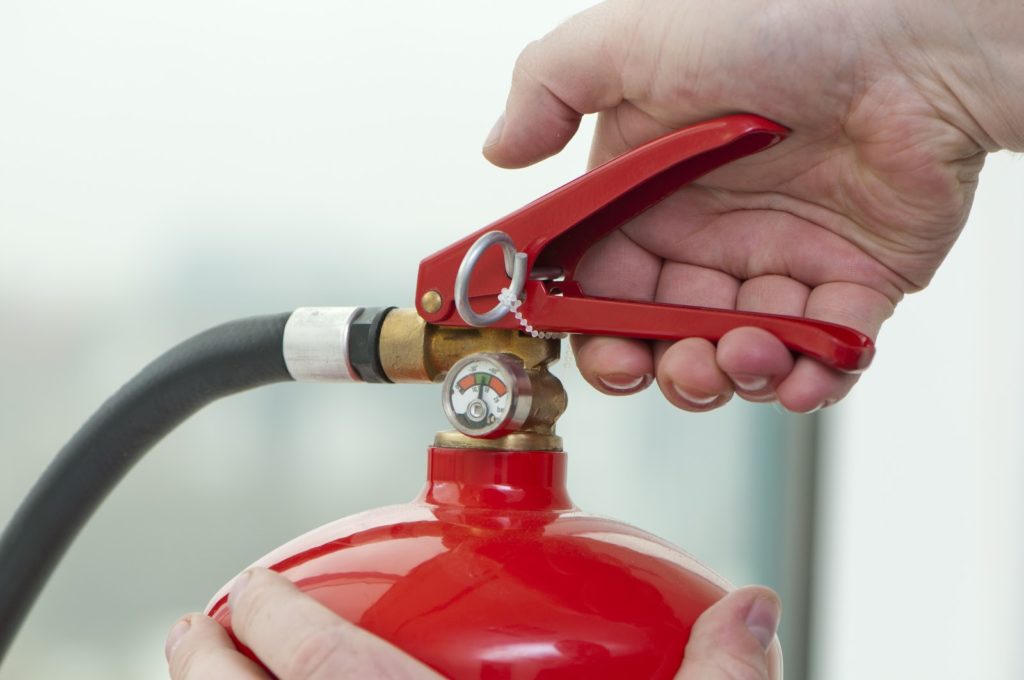Fire extinguishers are an essential addition to any property. Fire regulations state that any landlord of a house in multiple occupancy is required by law to provide fire blankets in kitchen areas and a fire extinguisher per storey of the property.
Here’s a guide to the different types of fire extinguishers available and how many are required.
Different types of fire extinguisher
Fires can result from any one of a range of different substances catching fire and each category has been assigned its own class of fire. These include:
- Class A fires – These involve solid combustibles, including wood, fabric, straw, paper and coal
- Class B fires – These involve flammable liquids, including petrol, oil, fat, paint, tar, alcohol and paraffin
- Class C fires – These involve flammable gases, including methane, propane, hydrogen, natural gas and city gas
- Class D fires – These involve combustible metals, including magnesium, lithium, aluminium, sodium, potassium
- Class F fires – These involve cooking materials, including oil pans, deep fat fryers and other substances that result in grease fires
- Electrical fires – These involve electrical appliances, including computers, heaters and fuse boxes
Not every fire extinguisher is effective or even safe to use on every type of fire, so when thinking about purchasing one for your property it is essential to consider the best fire extinguisher for your individual needs.
There are six main categories of commercially available fire extinguisher and each is designed to deal with different types of fire. These include:
- Water – Effective against Class A fires
- AFFF foam – Effective against Class A, B and electrical fires
- Carbon dioxide (CO2) – Effective against Class B and electrical fires
- ABC powder – Effective against Class A, B, C and electrical fires
- Water mist – Effective against Class A, B, C, F and electrical fires
- Wet chemical – Effective against Class A and F fires
Commercially available fire extinguishers are not equipped to deal with Class D fires. This is due to the fact that fires involving flammable metals almost always occur in industrial environments, in which special equipment is used to defuse them. It is extraordinarily rare to experience a Class D fire in a residential environment.
In this modern era of technology, an electrical fire is one of the most common types of fire in the home, caused by a blown fuse or malfunctioning digital system. Every household should therefore have a fire extinguisher that contains AFFF foam, carbon dioxide or water mist in order to deal with them.
Although ABC powder extinguishers are effective at dealing with electrical fires, as well as those in Class A, B and C, inhaling their powder can be harmful to your health and as such they are not recommended for residential use.
If you have a wood burning stove, it is worth putting a water extinguisher beside it in case of emergencies. Likewise, it is highly advisable to keep a fire extinguisher that can deal with Class F fires (such as one that contains water mist or wet chemicals) near your stove in case of emergencies.
Although it is best to have multiple types of fire extinguisher in your home to ensure complete fire safety, if you just have one,make sure that it is a water mist extinguisher as this covers almost all bases.

